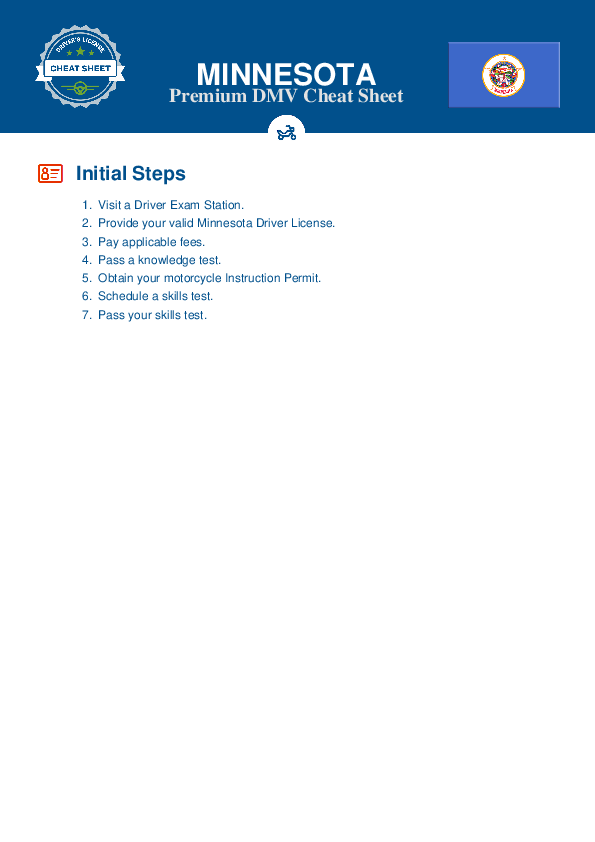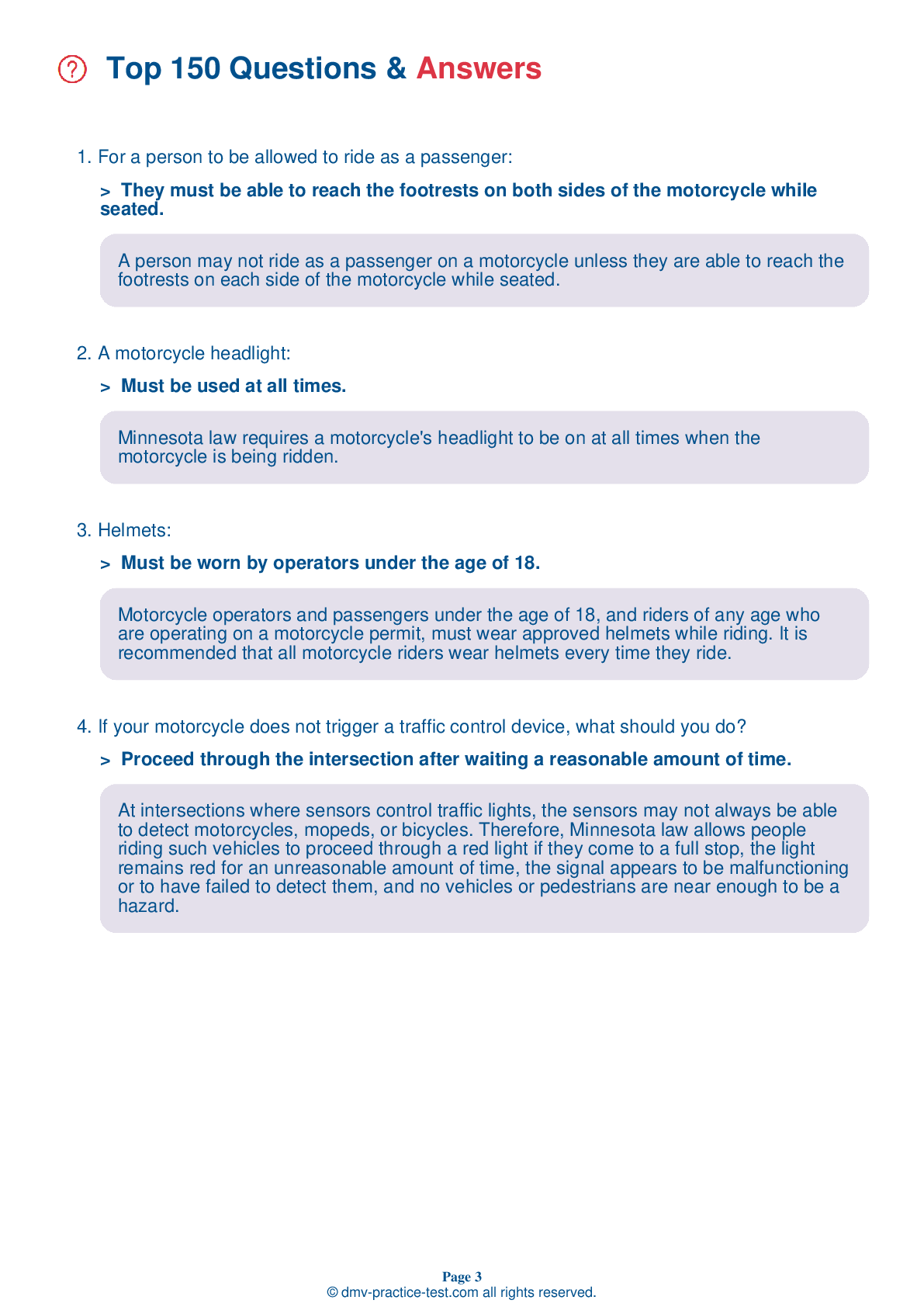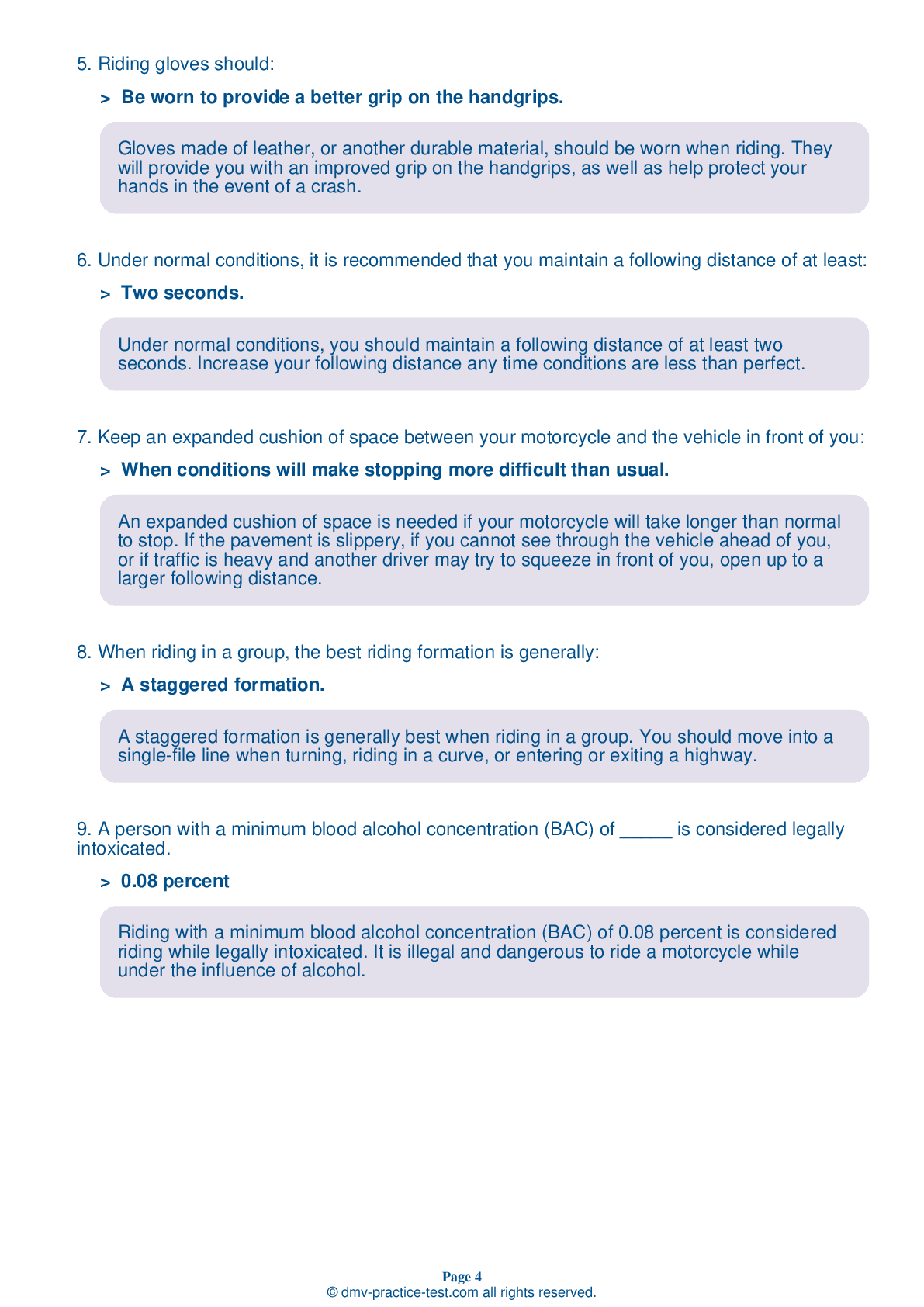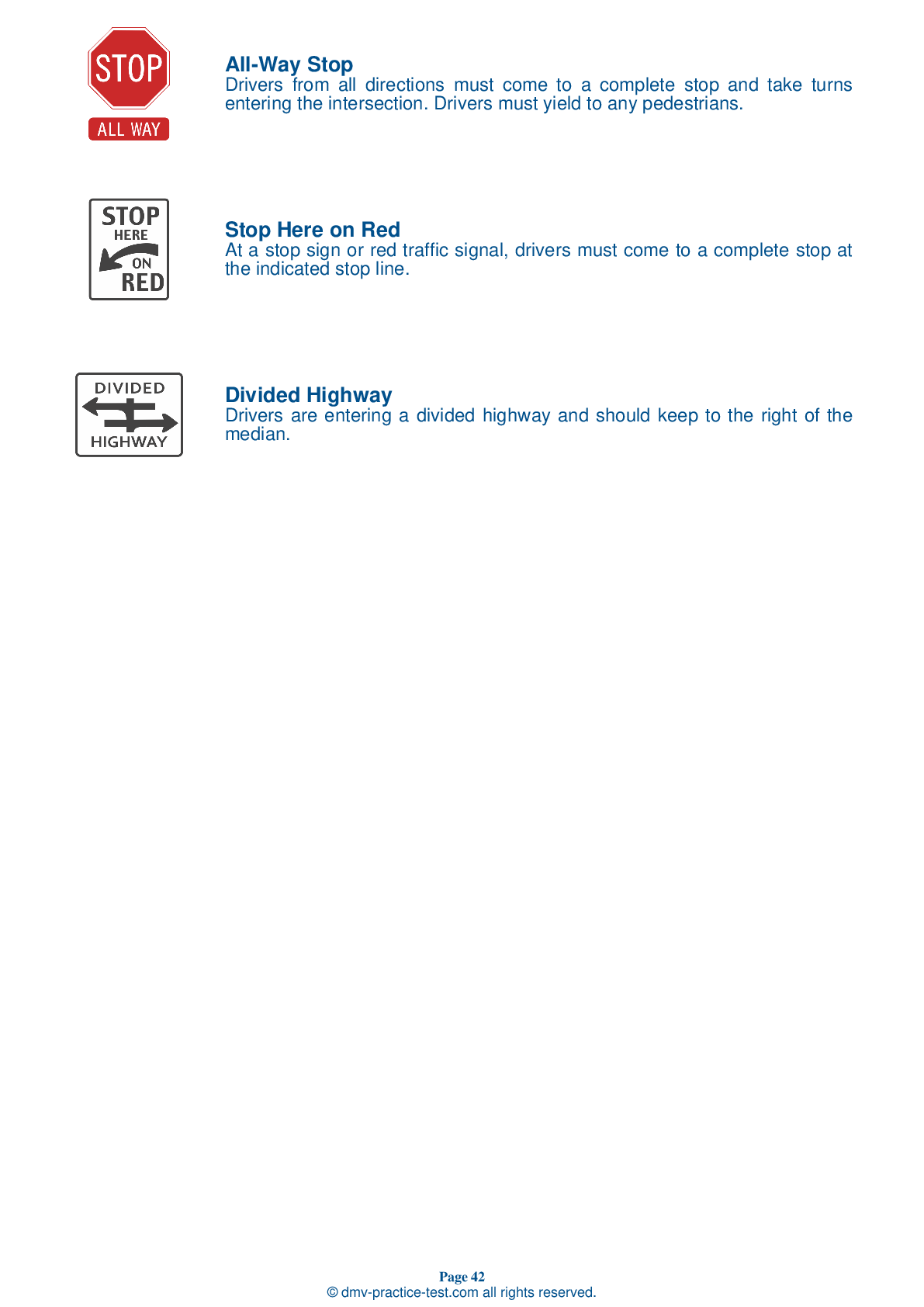Motorcycle Test | License MN 2025 | FREE Online Practice! #5 Page 2 of 5
Take this FREE motorcycle test (license in MN 2025) to check your knowledge of the road rules. To improve your results, download a motorcycle handbook online, study theory, and practice for free on our website. Still worried about how to get a motorcycle license in Minnesota in 2025? Check our website for more sample tests, train as much as possible, and boost your grades!
9 . When deciding on a lane position, you should:
In general, there is no single best lane position. No portion of the lane need be avoided at all times. Position yourself in the portion of the lane where you are most likely to be seen and you can maintain a cushion of space around you.
10 . Before every ride, you should:
Perform safety checks before every motorcycle ride. Test your brake controls individually to make sure each one activates the brake lights.
11 . If you are riding behind a car, you should:
When riding directly behind a car, it is usually safest to ride in the center portion of your lane. If you are riding in the center of the lane, you are most likely to be visible in the rearview mirror of the vehicle ahead. Most drivers check their rearview mirror more frequently than they check their side mirrors.
12 . Riding gloves are often:
Gloves designed for motorcycle riding are usually made of leather. In addition to improving your grip, gloves provide protection for a rider's hands and fingers.
13 . The best source of information for your motorcycle is:
To be sure you are familiar with the specific type of motorcycle that you are planning to ride, read the owner's manual before riding it for the first time. This is particularly important if you are riding a borrowed motorcycle.
14 . This road sign means:
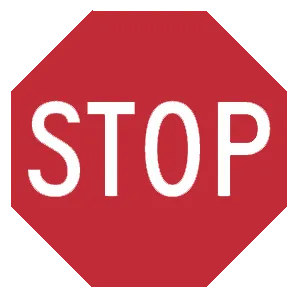
An eight-sided sign always means "stop." You must come to a complete stop and wait for any vehicles or pedestrians to clear the way before proceeding.
15 . When a lead rider's left arm is bent at the elbow with their index and middle fingers pointing straight up, it means:
Hand signals are an important part of communication when riding in groups. When the lead rider's left arm is bent at the elbow with their index and middle fingers pointing straight up, it means the group should move into a double-file formation.
16 . Riding a motorcycle is ______ driving a car.
Riding a motorcycle is more tiring than driving a car, especially on a long trip. Avoid riding when you are tired. Fatigue can affect your control of the motorcycle.
See the exact questions that will be on the 2025 Minnesota DMV exam.
99.2% of people who use the cheat sheet pass the FIRST TIME
Jeneen was tired of paying $5/gallon. She got herself a scooter that required the motorcycle license. She studyed the motorcycle test cheat sheet and passed her test the next day!
Christopher tells us how he knew nothing prior to obtaining the motorcycle study guide, and he only got one question wrong because he clicked on the wrong answer by mistake.
